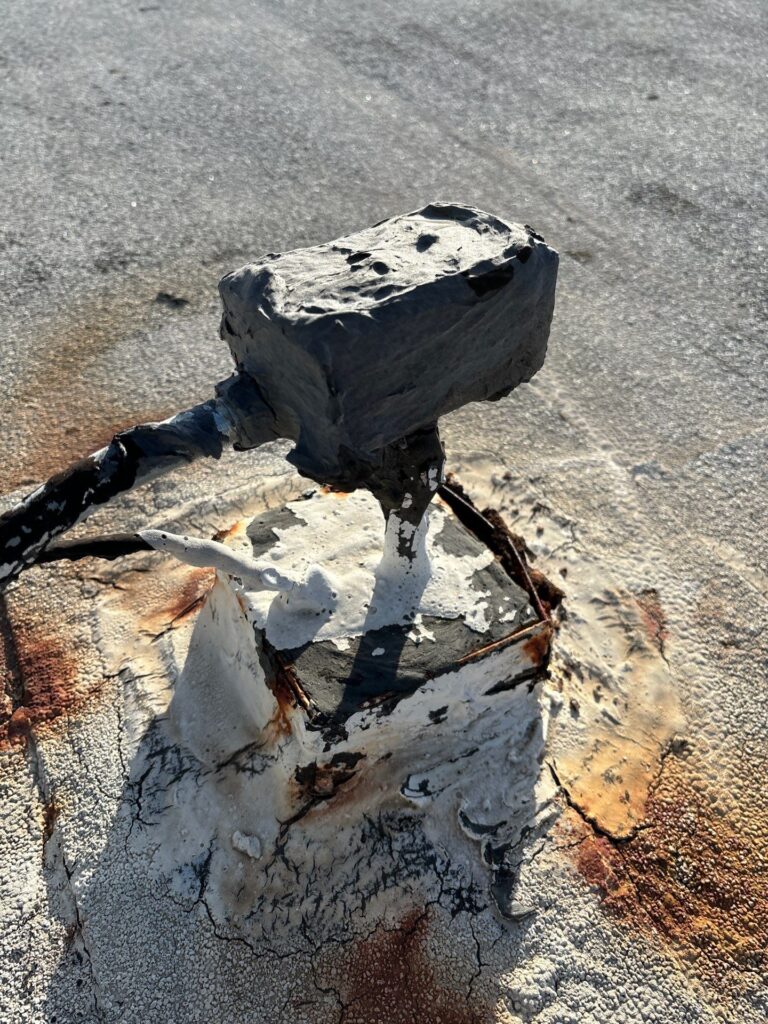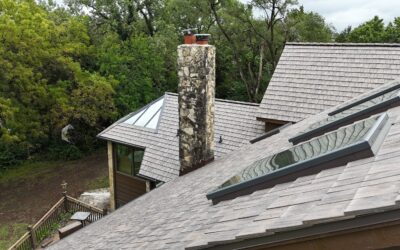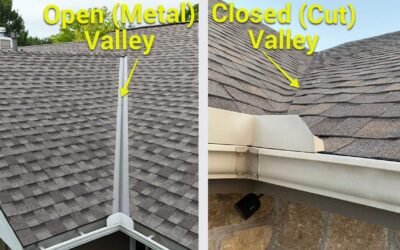What Is a Pitch Pocket on a Commercial Roof?
Pitch pockets are waterproof flashings for irregular penetrations on flat or low slope commercial roofs. They’re often used to waterproof pipes, supports, and structural attachments.
For example, let’s say your building’s mascot – a giant gorilla – is going up on the roof to draw attention from the street. Great idea. But now comes the challenge: how do you secure it in a way that prevents leaks and holds up against rainstorms and high winds?
That’s exactly the type of situation pitch pockets are made for.
This article details what makes pitch pockets effective, and what has the potential to make them one of your roof’s biggest vulnerabilities.
Table of Contents
Why Are Pitch Pockets Used for Roof Penetrations?
The purpose of a pitch pocket is to raise the level of irregular penetrations above the plane of the roof, elevating the penetration and protecting it from the flow of rainwater. If installed properly, pitch pockets are impervious to water infiltration for a number of reasons.
The Anatomy and Design of a Pitch Pocket
Pitch pockets are typically 3 inches tall and consist of a collar or ring (sometimes called a pan) that encircles the penetration and acts as a vessel for pourable sealant. The key feature of a pitch pocket is its ability to shed rainwater off and away from the penetration point.
A properly installed pitch pocket is domed or convex on top to ensure that the pitch pocket does not allow water to pool inside the collar.
Why Material Compatibility Is Critical for Pitch Pockets?
It is critically important for the health of your roof that the right kind of materials are used to create and maintain your pitch pockets. If you have a PVC roof, you will need to use a PVC collar, PVC-compatible primer to prep the area, and PVC-compatible sealant. The same is true for TPO, modified bitumen, and metal roofs. Each type of roofing material requires the pitch pocket materials to be compatible with the rest of the roofing system.
On a steep-slope residential roof, gutter materials are inherently compatible with the fascia. Aluminum, for example, works well with wood.
But low-slope commercial roofs are a different story. The waterproofing chemistry behind the membrane system prevents compatibility with some materials. Chemical incompatibility can compromise adhesion or cause long-term degradation, which is why careful material pairing is critical on low-slope roof membranes. The same consideration is made when applying roof coatings as well.

The Importance of Primer in Long-Lasting Roof Sealants
If you’ve ever painted cabinets, you know the value of primer. Pitch pockets demand the same treatment – a strong foundation is critical for a sustainable pitch pocket. Priming the surfaces to be adhered to the correct surface and sealant is essential if you want your pitch pocket to last.
Primer is important because, to create the pitch pocket, the roofer must get various types of polymers and bonding agents to stick together. It’s like Velcro – it only works if both sides are compatible. The primer ensures that all surfaces inside the pitch pocket chemically “mesh,” so the sealant can perform properly.
Common Pitch Pocket Failures and How They Happen
Let’s imagine you hire an inexperienced roofer to construct the pitch pickets on your roof at a reduced rate. Using the wrong kind of sealant, the wrong kind of primer, or no primer at all will cause the sealant to pull away from the collar, leaving a tiny gap for water to work its way in. Once water can find the tiniest crack to work with, it will gradually open and expand, especially with freeze and thaw cycles that are common in the lower Midwest.
Eventually, what started out as the sealant pulling away from the collar could result in a leaky roof, and potentially cause damage to your building.

Are Pitch Pockets the Most Vulnerable Part of Your Roof?
If pitch pockets aren’t installed properly or inspected regularly, they can become a weak link in your commercial roofing system. Like skylights and other roof penetrations, they need to be checked annually or bi-annually to ensure that the flashing around them is still in good condition.
The sealant will start to dry out and begin to contract and pull away from the sides of the collar, creating vulnerabilities around the penetration the pitch pocket was designed to protect. This happens because the sealants must be malleable enough to be pourable when wet. This pourability is what makes pitch pocket sealant vulnerable to shrinkage, cracking, and pulling away over time.
Why Is it Important to Maintain Pitch Pockets?
Because the pourable sealant comprising pitch pockets can shrink and contract, they occasionally require refilling.
Hiring a qualified and experienced roofer to regularly inspect your roof and pitch pockets prevents those irregular penetrations from becoming a regular source of leaks. It’s more cost-effective to pay for an annual roof maintenance plan than it is to wait until your roof has been leaking for several months, your roof decking has started to rot, your interior walls are full of mold, and your business operations have halted to accommodate a costly re-roofing project.
Summary and Key Takeaways:
- Purpose: The purpose of a pitch pocket is to raise the level of an irregular penetration above the overall plane of the roof, to keep it up and away from the flow of rainwater.
- Primer is Pivotal: Priming the surfaces to be adhered with the right kind of primer is essential if you want your pitch pocket to last. We repair far too many pitch pockets that were installed by roofing contractors who failed to prime with the right kind of primer.
- Dome the Sealant: The whole point of the pitch pocket is to keep water away from the point of penetration. Pitch pockets often need to be refilled occasionally as the pourable sealant that they contain begins to shrink and contract in their collars. Adding more sealant to the top of the pitch pocket can ensure the sealant always maintains a domed/convex shape, allowing water to run away quickly.
- Perform Regular Checks: Hiring a qualified and experienced roofer to regularly inspect your roof and pitch pockets could save you tens of thousands of dollars in the long run.



